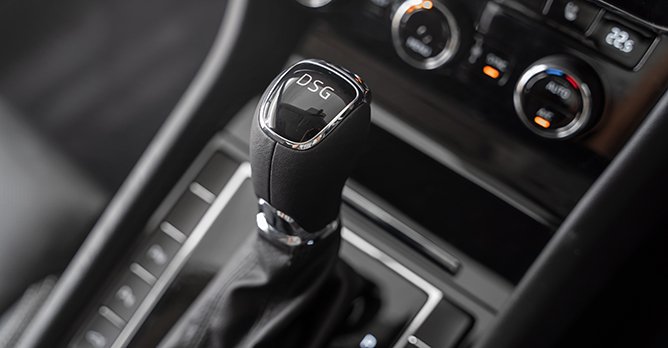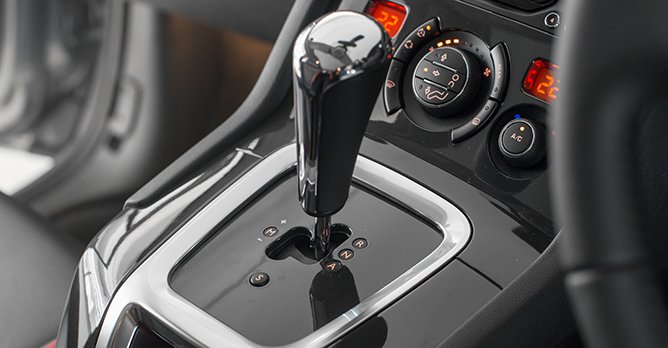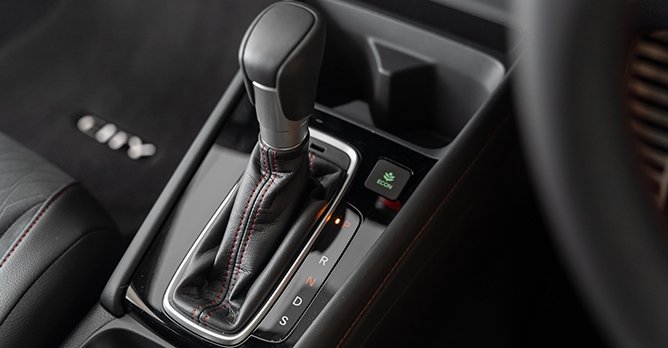Different types of automatic transmission explained - CVT, DCT & AMT
23 Feb 2021|19,943 views
Most people would know the differences between an automatic and manual transmission, with the latter allowing you to swap the cogs yourself.
But aside from the ease of use, there are different types of automatic transmissions available. Be it CVT, DCT, AMT, how do they differentiate themselves from traditional torque converter automatics? Are they more problematic and have reliability issues?
Here's a basic guide on the different automatic transmissions available on the market.
Automated Manual Transmission (AMT)
An AMT - to put it simply - automates the hand and legwork involved in shifting a manual transmission. From depressing the clutch and changing the gears yourself.
Hydraulic actuators are used to engage both the single clutch and the changing of gears. Although you don’t have to worry about shifting, most AMTs allow for the driver to select the gears yourself.
Many cars employ this gearbox, including supercars at the turn of the century. They both offer an engaging drive that one would expect from a manual transmission, without the need to get physical with the act of changing gears.
There are some downsides, though. Most AMTs do not 'creep' and may not have hill-holding abilities seen in traditional automatics. Also, shifting through gears can be a jerky affair. But with enough driver involvement, these downsides may not be so apparent.
AMTs have lost popularity over the years, no thanks to its downsides we mentioned, along with added cost in servicing them when the actuators or clutches wear out.

Sgcarmart
Join the Sgcarmart Community
Become a Community member to enjoy exclusive promos & freebies for you and your car!
Join us on TelegramDual Clutch Transmission (DCT)

It is known by many names. VW calls it DSG, and Porsche calls it PDK. Whatever the abbreviations, the primary function of a DCT is similar.
Similar to AMTs, DCT instead employs two clutches, with each clutch either handling an odd or even set of gears.
Thus, when a particular gear is in use, say second gear, the third gear would be ready together with the clutch. Shifting to the next gear can be almost immediate.
DCTs also use hydraulic actuators for the clutches. This is usually handled by a mechatronic unit.
There are some differences in terms of architecture between different DCT manufacturers, but the main difference many know of is the wet-clutch and dry-clutch variation.
The difference is in its name. In a wet-clutch setup, the clutches are bathed in oil to help cool them down.
The benefits of the DCT are in its inherent abilities to shift gears quickly and are smoother than AMTs. They also can be pretty fuel efficient.
But due to the complexities, issues ranging from actuator failures to premature clutch wear are not uncommon.
Continuously Variable Transmission (CVT)
A CVT does away with gears. Instead, two variable pulleys and a single v-belt are used. This allows for the transmission to variate between a range of ratios, whilst the car is moving along.
CVTs usually offer a lot of smoothness in normal day-to-day driving thanks to the lack of shifting.
Thus, because the car can be driven at the ratio it is more effective in at any given speed, it allows for an efficient drive. CVTs usually boast better fuel consumption figures when compared to regular automatic transmissions.
But most car enthusiasts clamour at the thought of a CVT. While some CVTs offer pre-set gears to select from, they still do not offer the same level of engagement as an AMT or DCT offers.
They also suffer from what is known as a 'rubber-band' effect, where the transmission plays catch up with the engine as it tries to match the right ratio for the car’s speed.
CVTs are generally also known to be reliable. But failure can happen with the belts themselves, causing slippage. Also, CVTs that employ a clutch instead of a torque converter may also face issues.

Sgcarmart
Join the Sgcarmart Community
Become a Community member to enjoy exclusive promos & freebies for you and your car!
- Be the first to enjoy exclusive promos & giveaways
- Enjoy membership perks for Sgcarmart services
Here are some related articles that might interest you
Top 8 car breakdown problems in Singapore
Three vehicle components you should replace on a regular schedule
Thinking of buying a car? Which type of car suits you?
Do you need to run in your new car?
10 workshops that can repair your complex automatic transmission issues
Most people would know the differences between an automatic and manual transmission, with the latter allowing you to swap the cogs yourself.
But aside from the ease of use, there are different types of automatic transmissions available. Be it CVT, DCT, AMT, how do they differentiate themselves from traditional torque converter automatics? Are they more problematic and have reliability issues?
Here's a basic guide on the different automatic transmissions available on the market.
Automated Manual Transmission (AMT)
An AMT - to put it simply - automates the hand and legwork involved in shifting a manual transmission. From depressing the clutch and changing the gears yourself.
Hydraulic actuators are used to engage both the single clutch and the changing of gears. Although you don’t have to worry about shifting, most AMTs allow for the driver to select the gears yourself.
Many cars employ this gearbox, including supercars at the turn of the century. They both offer an engaging drive that one would expect from a manual transmission, without the need to get physical with the act of changing gears.
There are some downsides, though. Most AMTs do not 'creep' and may not have hill-holding abilities seen in traditional automatics. Also, shifting through gears can be a jerky affair. But with enough driver involvement, these downsides may not be so apparent.
AMTs have lost popularity over the years, no thanks to its downsides we mentioned, along with added cost in servicing them when the actuators or clutches wear out.

Sgcarmart
Join the Sgcarmart Community
Become a Community member to enjoy exclusive promos & freebies for you and your car!
Join us on TelegramDual Clutch Transmission (DCT)

It is known by many names. VW calls it DSG, and Porsche calls it PDK. Whatever the abbreviations, the primary function of a DCT is similar.
Similar to AMTs, DCT instead employs two clutches, with each clutch either handling an odd or even set of gears.
Thus, when a particular gear is in use, say second gear, the third gear would be ready together with the clutch. Shifting to the next gear can be almost immediate.
DCTs also use hydraulic actuators for the clutches. This is usually handled by a mechatronic unit.
There are some differences in terms of architecture between different DCT manufacturers, but the main difference many know of is the wet-clutch and dry-clutch variation.
The difference is in its name. In a wet-clutch setup, the clutches are bathed in oil to help cool them down.
The benefits of the DCT are in its inherent abilities to shift gears quickly and are smoother than AMTs. They also can be pretty fuel efficient.
But due to the complexities, issues ranging from actuator failures to premature clutch wear are not uncommon.
Continuously Variable Transmission (CVT)
A CVT does away with gears. Instead, two variable pulleys and a single v-belt are used. This allows for the transmission to variate between a range of ratios, whilst the car is moving along.
CVTs usually offer a lot of smoothness in normal day-to-day driving thanks to the lack of shifting.
Thus, because the car can be driven at the ratio it is more effective in at any given speed, it allows for an efficient drive. CVTs usually boast better fuel consumption figures when compared to regular automatic transmissions.
But most car enthusiasts clamour at the thought of a CVT. While some CVTs offer pre-set gears to select from, they still do not offer the same level of engagement as an AMT or DCT offers.
They also suffer from what is known as a 'rubber-band' effect, where the transmission plays catch up with the engine as it tries to match the right ratio for the car’s speed.
CVTs are generally also known to be reliable. But failure can happen with the belts themselves, causing slippage. Also, CVTs that employ a clutch instead of a torque converter may also face issues.

Sgcarmart
Join the Sgcarmart Community
Become a Community member to enjoy exclusive promos & freebies for you and your car!
- Be the first to enjoy exclusive promos & giveaways
- Enjoy membership perks for Sgcarmart services
Here are some related articles that might interest you
Top 8 car breakdown problems in Singapore
Three vehicle components you should replace on a regular schedule
Thinking of buying a car? Which type of car suits you?
Do you need to run in your new car?
10 workshops that can repair your complex automatic transmission issues


















